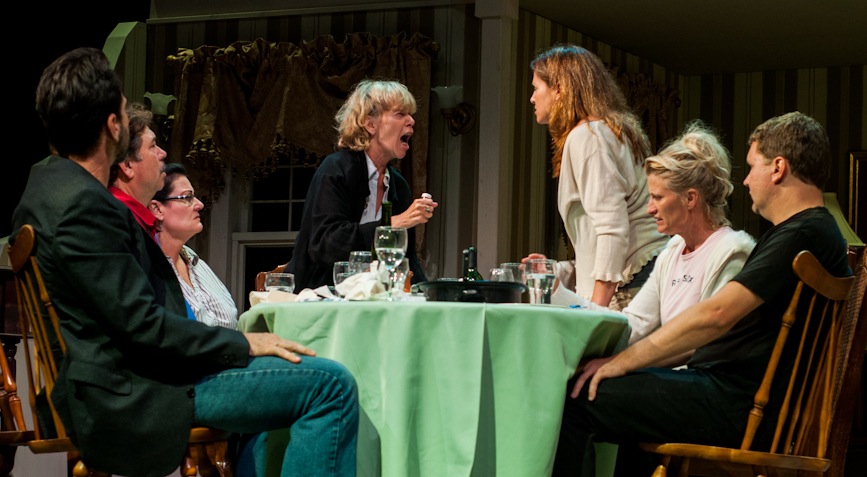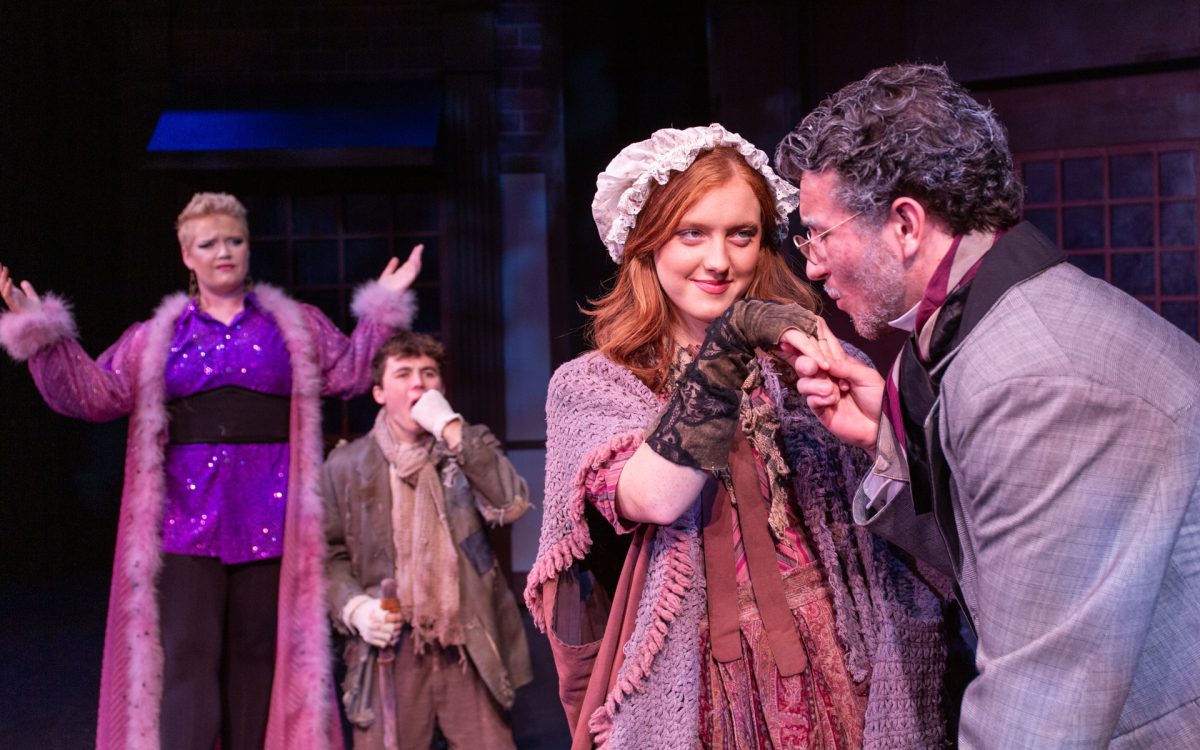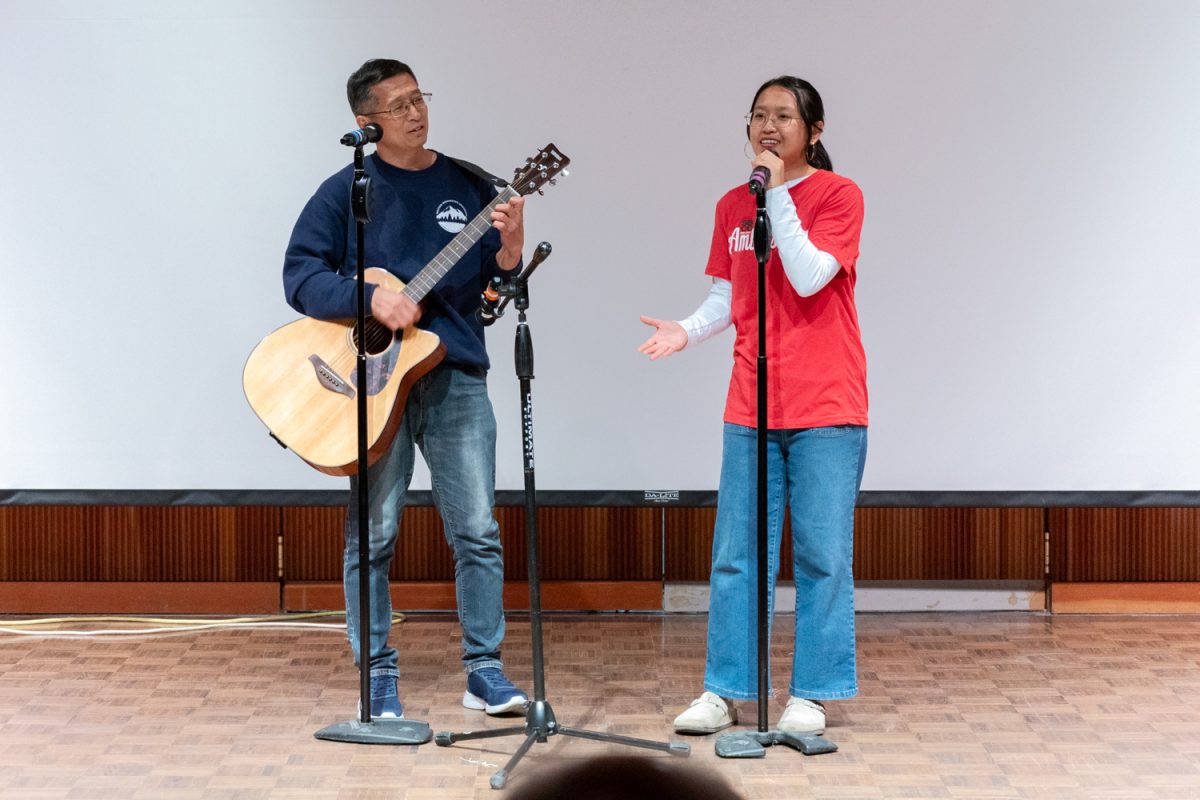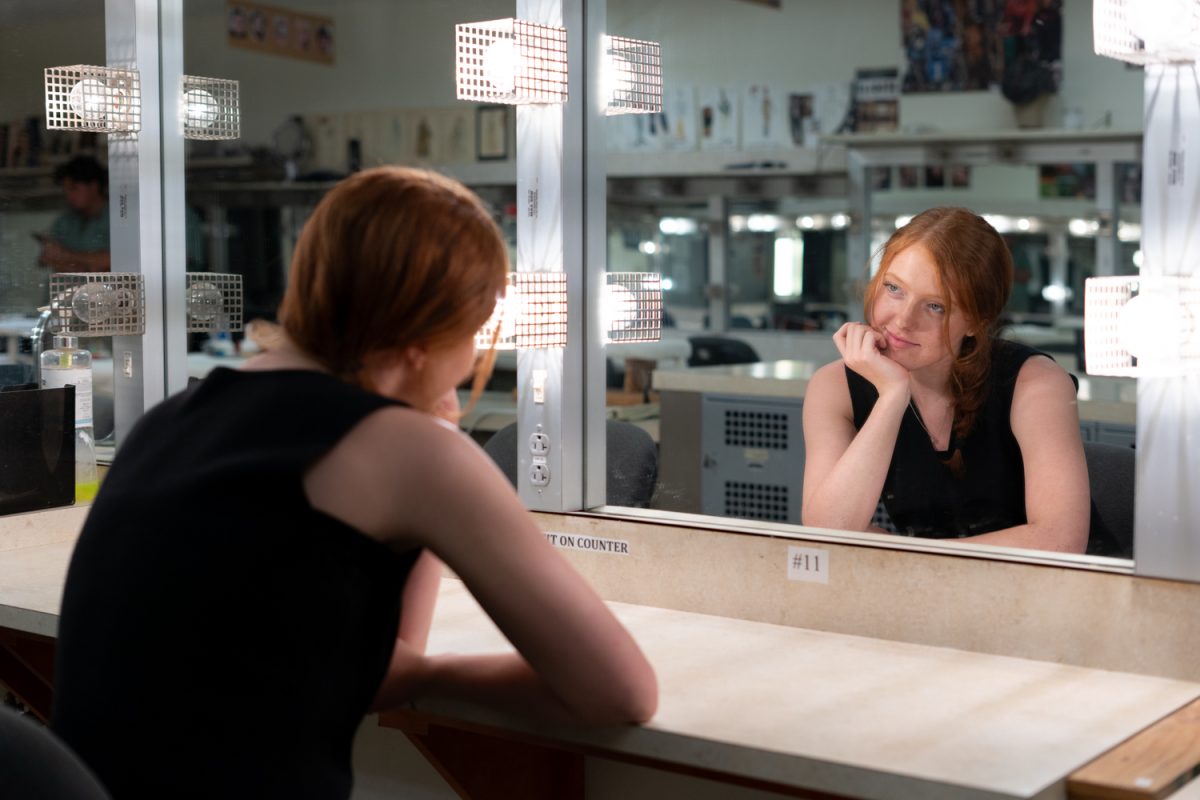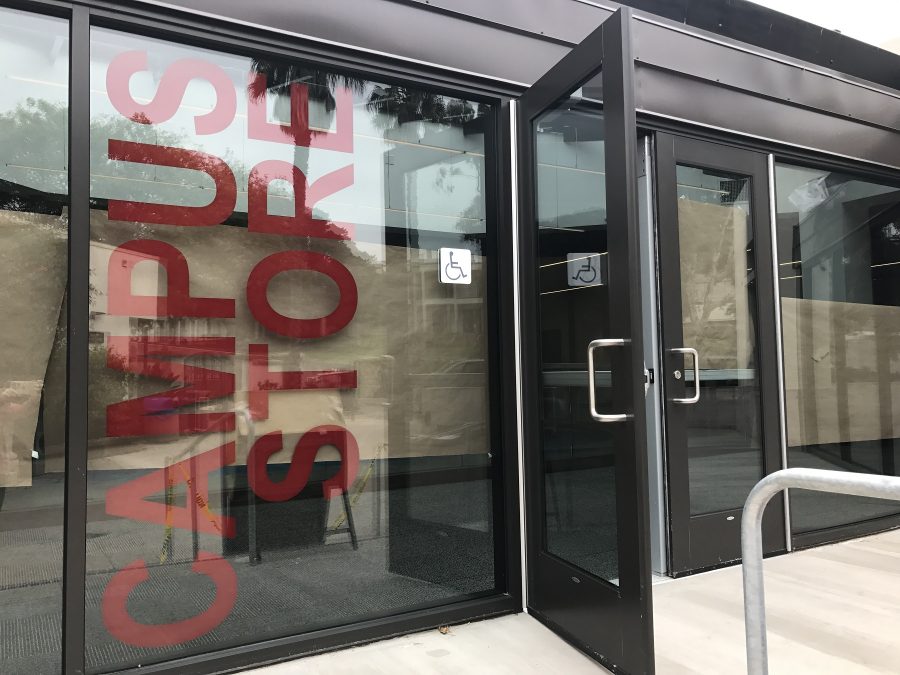What is the best way to accurately recreate the sound of a frying pan hitting someone’s head?
This is a serious question that had to be answered before the third act of the multi-award-winning play “August: Osage County.”
As a frying pan crashes into a skull, a loud smack resonates a melancholy plangency from behind the stage and sends involuntary shudders throughout the audience. When the character is struck, assistant stage manager Cathryn Betz is backstage beating a cast-iron frying pan with a mallet.
Over time, and with several rehearsals, the frying pan has slowly begun to split due to the real violence used to produce Betz’s theatrical effect.
Having been performed in the Steppenwolf Theatre in Chicago and Broadway, “August” and its reputation have reached the Garvin Theatre.
“August” is a morbid, character-driven drama-comedy about the twisted morality and inherent intergenerational conflicts of a family in crisis. It officially premieres Oct. 19 in the Garvin Theatre.
The Weston family reunites in Osage County, Oklahoma after the father, Beverly, has gone missing. The script, written by playwright and screenwriter Tracy Letts, is chilling and exemplifies his recurring theme of domestic chaos and off-kilter humor in remote settings, as depicted in his works “Bug” and “Killer Joe.”
The set gives us the Weston homestead with a wall missing, revealing the unrest unfolding inside. The complicated construction shows the home’s three stories and its multitude of rooms.
The play is the incredible collaboration between Laris’s direction and the talented cast of actors, each of whom personify their roles exceptionally. Although its runtime is quite extensive (almost three and a half hours), there is scarcely a dull moment.
All thirteen performers on stage act their heart out and create a tightly knit production.
Actress Susanne Marley gets under the skin of Violet, the inconsolable, delirious mother with mouth cancer and a severe addiction to prescription pills. Marley reprises the role that she understudied on Broadway and works her character with a frightful style. She stumbles down the staircase and stammers with foreboding malice.
Violet and her daughter Barbara, played by Anne Guynn, are two of the most notable performances. The two women are constantly battling in a titillating power dynamic tug-of-war.
“Thank God we can’t look into the future,” Guynn says in the third act. “We would never get out of bed.”
Guynn, in particular, is absolutely phenomenal. Barbara is afflicted with severe mental and physical exhaustion that come from coping with multiple family crises and the oppressive Osage County heat.
Student-actresses Maria Oliveira and Devyn Williams also stand out in their performances as two of the few unambiguously sane characters in the play: a newly hired Native American housemaid, and a marijuana-smoking 14-year-old, respectively.
Their reliable sanity is the foundation for the play’s volatile atmosphere. It is necessary for a world filled with such social depravity to have a modicum of good sense for contrast.
The play is a devastating view of the coarse hubris that conflicts when too many relatives are under the same roof. The result is ultimately as horrifying as a cast-iron pan progressively cracking from repeated thumps over someone’s head.


